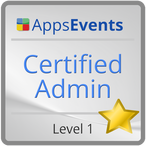|
Consider whether one of the following activities might work well for your colleagues during a regularly scheduled staff/department/PLC meeting.
Host a group / PLC viewing of the TEDTalk video: How your “working memory” makes sense of the world. As a group, reflect upon the following questions and discuss: Play the working memory game with the presenter, and discuss the questions below. [2:31-3:58]
How do we use our working memory in our daily lives? How does this translate to the classroom? [4:39-5:14] How is working memory limited? What strategies can we use in our classrooms to help support student’s working memory? [6:44-9:18] Before the PLC group meets, the PLC lead (or another volunteer) should create a list of about 7 items. Divide the time allotted for the PLC meeting by 10 (e.g., if the meeting will be 45 minutes, each division will be 4½ minutes). At the start of the meeting ask colleagues to remember the first term on the list, then proceed with the meeting as normal. When each chunk of time passes, give colleagues another term to be remembered. (So for example, at the start of the meeting, you may ask them to remember “computer”; five minutes later, you ask them to remember “dolphin”; and ten minutes into the meeting, you add “pickle” to the list. And so on.) After all of the items have been given, ask them to write the list of words down, preferably in order. Then consider the following questions:
As a group, reflect on the resources in the course and hold a share out of the strategies you staff learned about, and what strategies they utilize to support their students’ working memory. Using the strategies discussed, design a series of tasks that help students identify their own working memory capacities. The first task should have 3 directives for students to remember at one time. The second task might have 4-5 directives for students to remember. The last should have 6-7 directives for students to remember. Once these activities are complete, have students reflect on the following questions:
Source: The Friday Institute for Educational Innovation - North Carolina State University
0 Comments
Leave a Reply. |
BLOGS:This blog contains education-based information acquired through my participation in different MOOCs, online institutes or PD.
ArchivesCategories |


 RSS Feed
RSS Feed